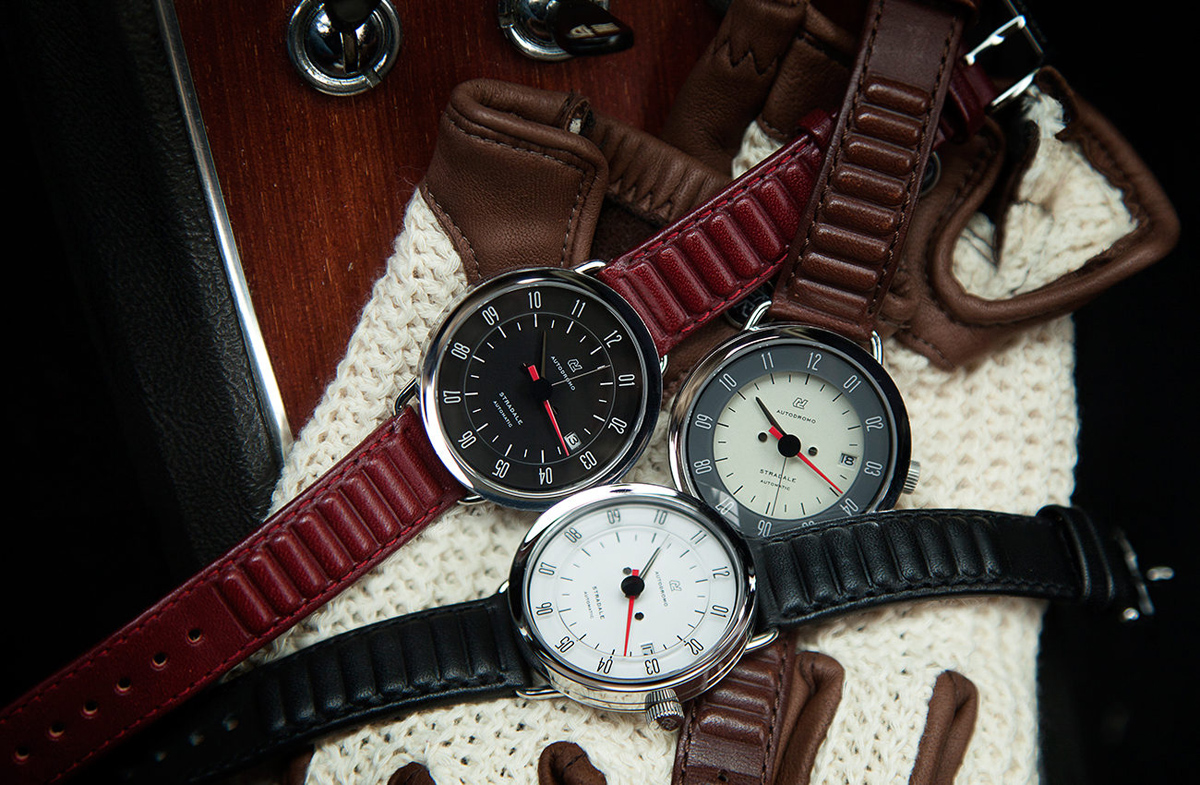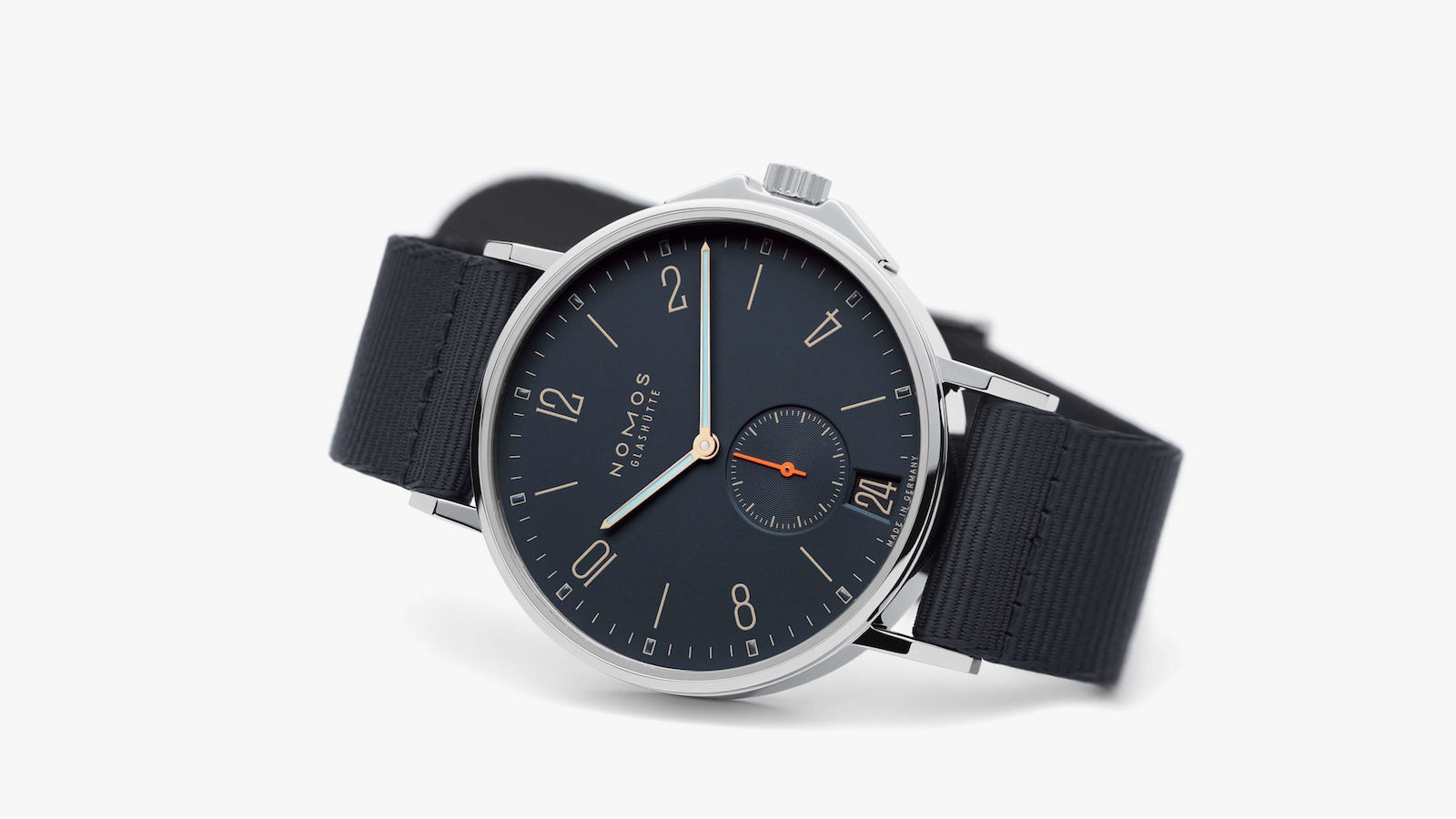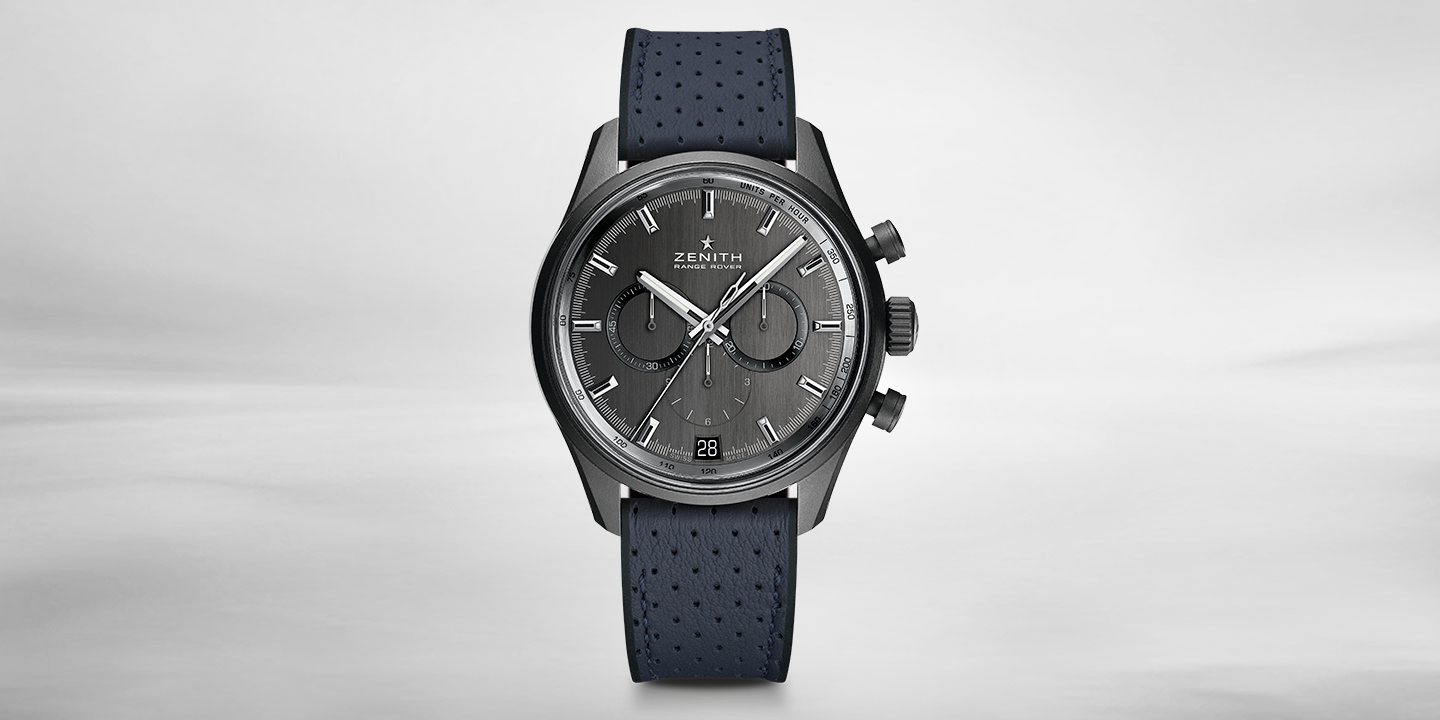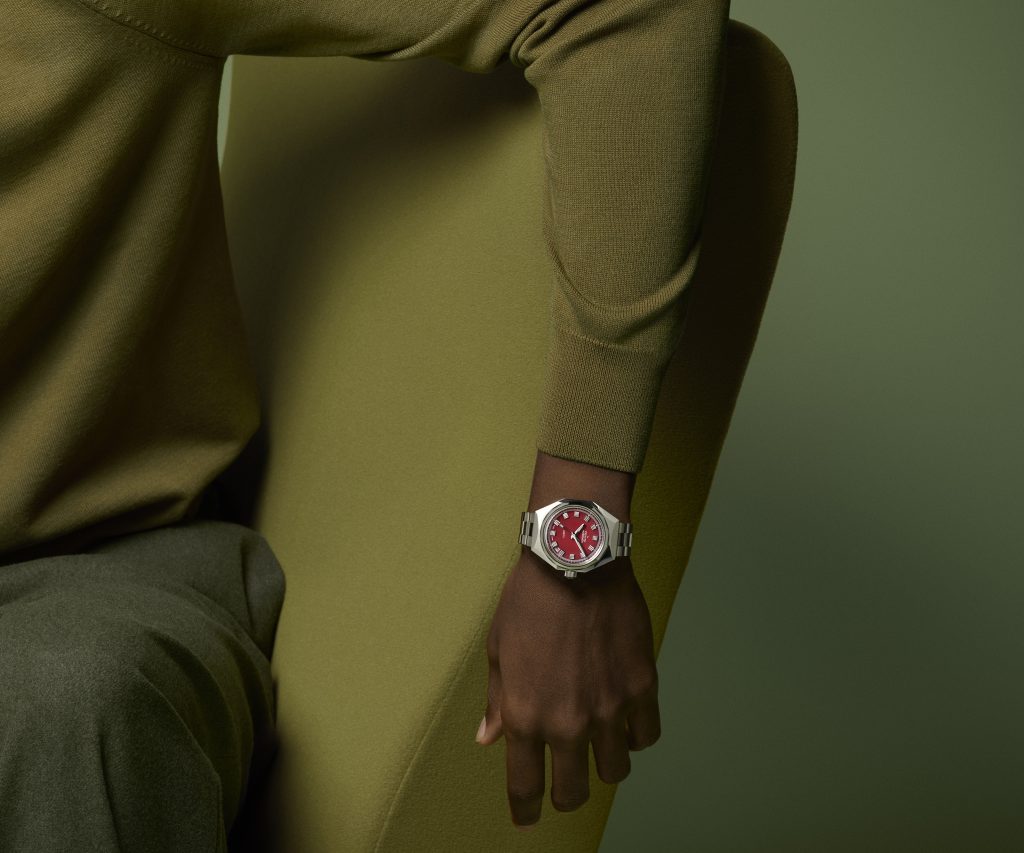Reducing the Design Elements of Time-Telling
Subtracting from decades of more-is-more wristwatches to deliver something beautiful

Undeniably we stand in the midst of a minimal watch boom—with Daniel Wellingtons flying off the shelves (both tactile and digital) and onto the wrists of those who haven’t abandoned ship for the Apple Watch. Minimalism and reductionist aesthetics, however, are two different things. For every brand out there calling itself modern, minimal, clean and classic, there are a dozen others presenting unique, distinct designs that reduce time telling signifiers in unexpected ways. These brands come at a range of prices, varying from reasonable to hefty, and employ everything from PVD to platinum. This reductionist ideology allows different visual elements to speak both about how we perceive time on a dial and what we as a consumer value in a watch. From Nomos to Georg Jensen and Moser to Jaquet Droz, brand-defining nuances make clear that it’s easy to avoid losing personality through reductionist actions. To best understand this, we’ve spoken with important figures behind many of our most beloved brands. Here, again, with prices starting just above $100 and ending in the multiple thousands.

Autodromo
Nobody understands navigating the world of reduction quite like Brooklyn’s Bradley Price, founder and designer of longtime CH favorite Autodromo. “It is a real challenge to design a ‘minimalist watch’ and not end up looking like the archetypal ‘design store’ watch,” he explains to us. “Many brands fail at this, but that is partially because a lot of them are indeed using the same off-the-shelf cases and hands as each other. One of the cornerstones of my approach is that each new model is a completely proprietary design from the ground up. So this gives me a chance to make something that is truly our own, and says ‘Autodromo’ when seen from any angle.” He is quick to note, “Each detail of my designs is in service of the larger picture of what that watch is about, and what story it is trying to tell.” Understanding the final product allows a careful selection of the components within.
Still, designers are beholden to specific elements. “There are certain rules one has to follow about proportions and hand sizes to make a watch readable and ‘familiar’ to a viewer, but I try to bend those rules as much as possible in service of my creative expression.” Through trial and error Price learned this. “I don’t rush the process. Because often it really is a reductive process. I may come up with something I think is cool looking, but I have to always put that on the shelf for a few weeks and come back to it and ask myself if it isn’t too fussy, or too literal. The process is as much about consciously editing away the superfluous and abstracting the literal as it is about designing something new,” he explains. “A well-balanced dial design is a thing of sublime beauty to me because at some point all the elements seem to just lock into place and at that point seem inevitable.” We agree.

Ressence
No other watch comes close to those in the roster of Ressence. Founder and designer Benoît Mintiens is a pioneer in the industry and his vision incorporates engineering breakthroughs previously unheard of. “The less you have to say, the more you compensate with artifacts,” he says to us. “is very applicable to watchmaking. Don’t get me wrong, I don’t have a problem with that, most people buy a watch because it gives them confidence, less because it tells time. Our watches are designed from a functional perspective. All we create is driven by ergonomics in the broader sense of the word. This is on itself quite unique in watchmaking. Our starting point is the user. A user-centered design is functional and therefore very likely to be ergonomic. So if we pair down to the functional essence and rethink this essence (expressing time) you obtain a new ‘reality—eco-system’ that is very ‘reduced’ yet original and authentic.”
“That is how we end up with a very distinctive product yet very understated,” he continues. “Our forms follow the functions. We are not making art; our products are designed to do what they are meant to; that is: expressing time in the
most efficient way. Functional is relevant. Functionalism goes to the essence.” That said, he makes clear a product must have a soul, or at least an identity. “It needs a smile,” Mintiens says before stepping back in time. “Look at products from the ’60s and the ’70s. They are fundamentally different. Look at the size and style of watches just before and right after the 2008 crisis. We are what we wear, what we buy. A watch is your avatar. It reflects your mind set. If you feel a certain way, you will dress that way and your watch is an important accessory in that. Today we are looking at a ‘vintage’ revival. What does that say about our industry and the context we are in? Smaller watches, more function driven, less thrills, more timeless. I think we are at a point where the industry needs to reinvent itself in the face of smart watches. The quartz traumas are still present. Introversion is the wrong answer to a world that is changing.”

Mondaine
Between Mondaine‘s range of accessible price-points and its guaranteed Swiss-made quality, one may struggle to find a brand offering as much value. Predominantly known to be the timepiece designed after the official Swiss railway clock, Mondaine embodies efficiency and with that comes reductionism. “For many years we have seen the ‘more is more’ approach,” explains Andre Bernheim, CEO, Mondaine, “But recently many customers are yearning for something simpler that tells a deeper story. The Mondaine core positioning is simple, classic, timeless and highly oriented to functionality. After all, the watch is primarily an instrument to read time. This frees us in a way from the ebb and flow of trends.”
“Hans Hilfiker, the designer of the legendary Swiss railways clock said, everything that you would add would be too much and all that you would omit would be wanting,” Bernheim continues. “The Mondaine SBB design was specifically created for the ability to read time quickly and from all distances. For the Mondaine Helvetica line we follow exactly the same concept. The Helvetica font is considered one of the icons of typography. It is the inspiration for hundreds of logos, headlines on billboards,
passenger information (as seen on the NYC subway), information brochures and more because of its intrinsic readability. Helvetica’s modest beauty and clear visibility makes this font a servant of information and can be used for many different applications.” These aesthetic values—and their direct correlation to functionality—mark more than a moment in time. Reductionism may have a strongly recognized spot in watchmaking and design as a whole right now, but these are not passing whims or interests. They’re, together, a defined pillar in design language.

NOMOS Glashütte
NOMOS Glashütte represents a contemporary iconic style met with German functionality. From the simple but stately tone-on-tone Minimatic to the just-enough power reserve indicator of the Metro to the dark and water-resistant Ahoi for those who want style “sports couture” when they’re in the water or just looking to make a splash, each “draws on a watchmaking tradition from Glashütte in Germany spanning over 170 years. We combine this rich heritage with modern product design created in Berlin, informed by the principles of the Bauhaus movement and the Deutscher Werkbund,” says Thomas Höhnel, the designer at NOMOS who created the Ahoi.
“The industry’s current trend toward reductionism is further confirmation that our approach to design is the right one. We draw on the heritage of German product design, which has a culture of clear lines and clean-cut forms,” he continues. Yet, a NOMOS on the wrist is instantly identifiable and uniquely its own. Höhnel continues, “the fact that customers are still attracted to relatively simple, classic designs shows that fundamental aesthetic principles remain as true as ever.” Don’t mistake clarity of design for simplicity, though. Höhnel notes that their “approach is not necessarily minimalist, as the many playful details on our dials prove; it is rather an unwavering focus on the essentials of timekeeping.” A NOMOS timepiece is an endorsement of good taste and an appreciation for new-informed-by-old German design and timekeeping craft.

ochs und junior
On a recent visit to Lucerne we had the chance to visit ochs und junior‘s unique street-level workshop and store. There, we met with co-founder Beat Weinmann who oversees the custom watchmaker’s 120 or so bespoke pieces sold each year. Celebrated watchmaker Dr Ludwig Oechslin is the creative force in house, imagining new ways of presenting traditional complications.
The perpetual calendar, for example, is a complication that controls a watch’s ability to present the correct day, date and month 365 days a year, even during leap years. One of the most ambitious challenges to produce, it typically takes around 180 parts to enable a watch to do so accurately. Oechslin has mastered the task in a scant dozen custom-created pieces. Reductionism takes place behind the scenes, underneath the watch face, where Oechslin “undertakes an intense design process to create simpler solutions than have been achieved before.” It’s only one of the many ways the talented duo does things in their own unique way, from their commission-based sales to their web-first model eschewing retailers, customers style the watch of their dreams knowing that it will be uniquely theirs.

Zenith
Known for iconic models like their Class Elite Dual Time, El Primero and Elite 42 Automatic, Zenith‘s heritage and quality appeal to many (they also happen to be an official partner of Land Rover). Their timepieces are crisp and functional with a clean, classic appeal. New styles like the El Primero Range Rover edition featuring a ceramic case, and the new variations customized by George Bamford, now an official partner with the brand, demonstrate reductionist innovation. “The watches and client demand navigate the designs,” Bamford explains. “Iconic designs are often linked to iconic people such as Steve McQueen and his Monaco. Zenith has one of the longest surviving movements and I love the history and wonderful designs.” Even in their most reduced models, Zeniths still exude such wonder.
Lead image by Cool Hunting, all other images courtesy of respective brands












